On View
See Inside a New Exhibition That Ties Bollywood Musicals to the Long Tradition of Depicting Dance in Southeast Asian Art
"The big idea for this exhibition is dance is power," said one of its curators.
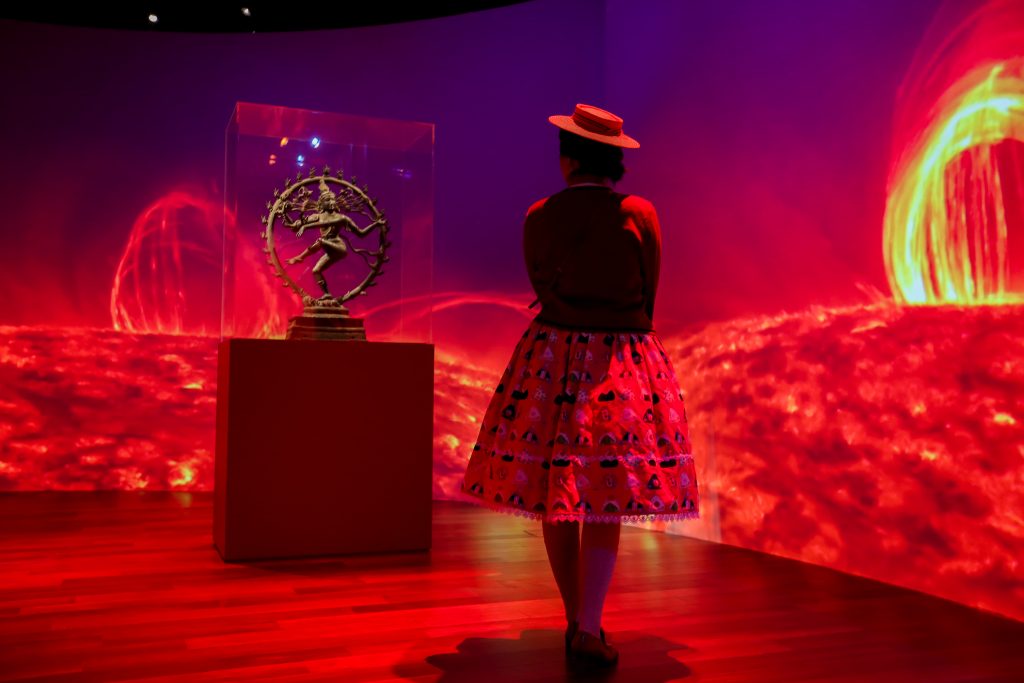
"The big idea for this exhibition is dance is power," said one of its curators.

Sarah Cascone

Bollywood cinema is known for its elaborately choreographed song-and-dance numbers—a phenomenon that reflects the importance of dance in the art of Southeast Asia, South Asia, and the Himalayas for millennia.
That’s the thesis of a new exhibition at San Francisco’s Asian Art Museum celebrating 2,000 years of the visual language of dance—and its historical, spiritual, and political impact across a broad geographic region that includes India, Pakistan, Nepal, Tibet, Sri Lanka, Thailand, Cambodia, and Indonesia.
“What we’re trying to pull out is how really important dance is in the religion and mythology and court culture and everyday life of all of those places,” exhibition co-curator Forrest McGill, the museum’s senior curator of South and Southeast Asian art, told Artnet News.
Five years in the making, “Beyond Bollywood: 2,000 Years of Dance in Art” brings together 120 artworks from 25 museums and private collections. Originally conceived of by Laura Weinstein, the curator of South Asian and Islamic Art at the Museum of Fine Arts, Boston, it became a collaboration between the Asian Art Museum and the Cincinnati Art Museum when the Boston museum had to pull out for scheduling reasons.
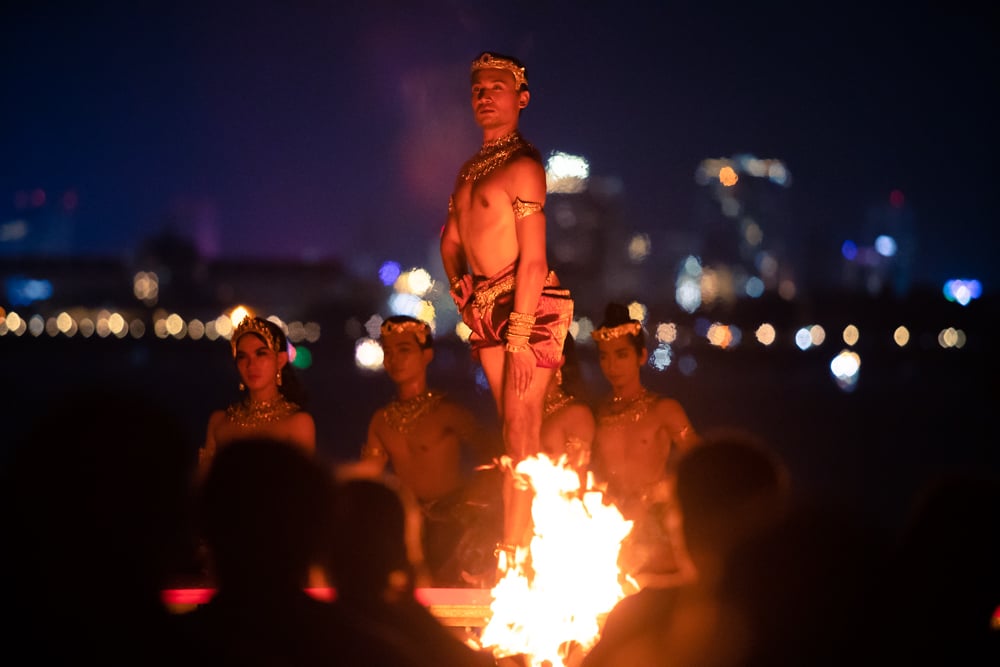
Classical Khmer dancer Prumsodun Ok. Photo by Nobuyuki Arai.
Bollywood movies, of course, draw inspiration from Hollywood musicals. But some of the early Bollywood films recounted traditional stories from Indian mythology, and the exhibition pairs a number of objects with short movie clips related to the subjects of the artworks.
“The big idea for this exhibition is dance is power,” McGill said. “I think people are going to be surprised to see how often deities are dancing, and in different contexts they’re dancing… dancing seems to symbolize the energy and the power of the deities.”
The show opens with a bold expression of that power: a statue of a dancing Shiva from 800 or 900 years ago.
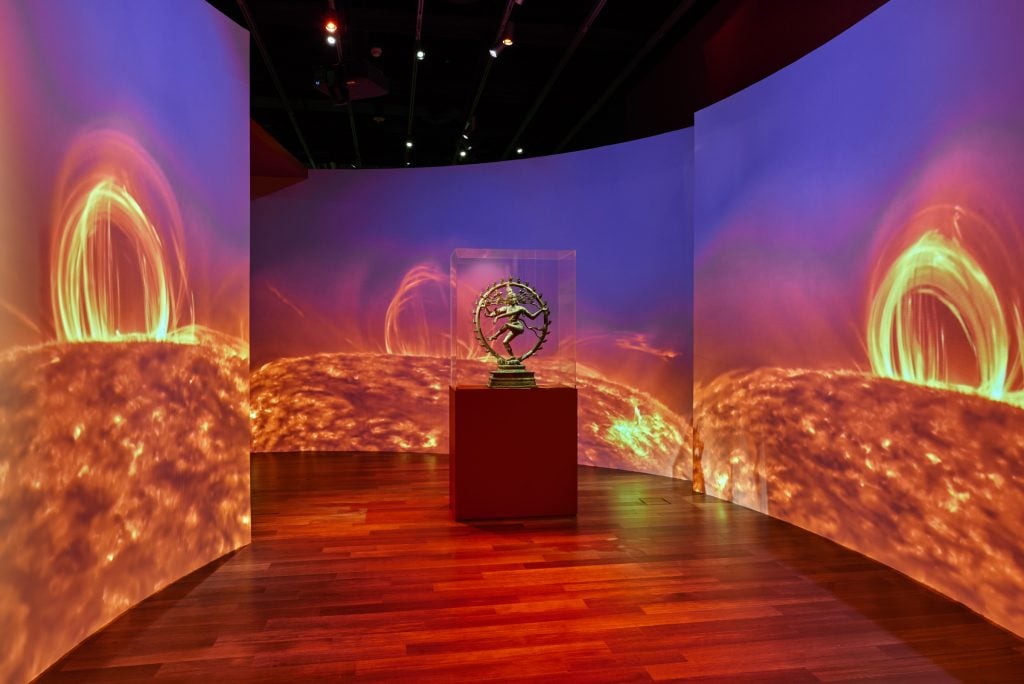
Installation view of “Beyond Bollywood: 2000 Years of Dance in Art” at the Asian Art Museum, San Francisco, with a statue of Shiva displayed against a backdrop of NASA footage of solar flares. Photo courtesy of the Asian Art Museum, San Francisco.
“It’s surrounded by projected video of NASA footage of solar flares,” McGill said. “This is meant to suggest how Shiva’s dance is really happening out in the cosmos. It has implications of cosmic destruction and cosmic recreation.”
“In the Indian and Hindu and Buddhist worldview, time is cyclical,” he added. “The cycle of destruction and recreation is happening endlessly, over and over and over for billions of years. There’s no first beginning or final end.”
Other memorable depictions of deities in the show include a mischievous statue of the Hindu god Krishna as a child dancing for joy—”full of the sense of an impish little boy,” McGill said—and an adult Krishna dancing in victory on the head of a vanquished serpent.
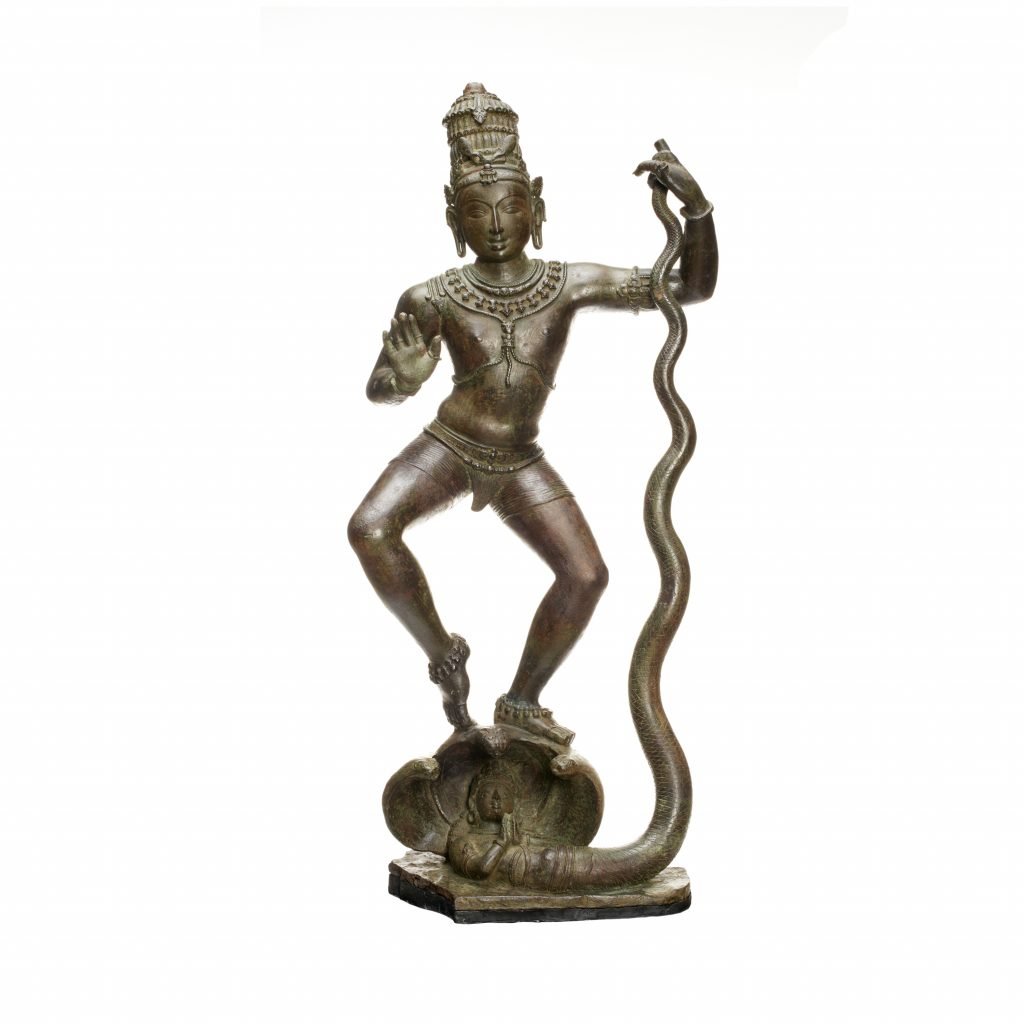
Krishna overcoming the serpent Kaliya (ca. 975–1025). India; Tamil Nadu state. Copper alloy. Collection of the Asia Society, New York: Mr. and Mrs. John D. Rockefeller 3rd Collection.
Dance also appears as a form of seduction—a distraction tactic that usually failed when employed against the gods.
The earliest work in the show, on loan from the Metropolitan Museum of Art in New York, is a 2,000-year-old plaque from northern India, of a woman dancing to an accompanying harpist.
“The harp didn’t survive as a musical instrument in India, interestingly,” McGill said. “But the position of the dancer, the way she holds her arms and legs, could absolutely come out of a dance performance today!”
The final work in the show is a three-channel 2016 video by Sarah Choo Jing titled Art of the Rehearsal.
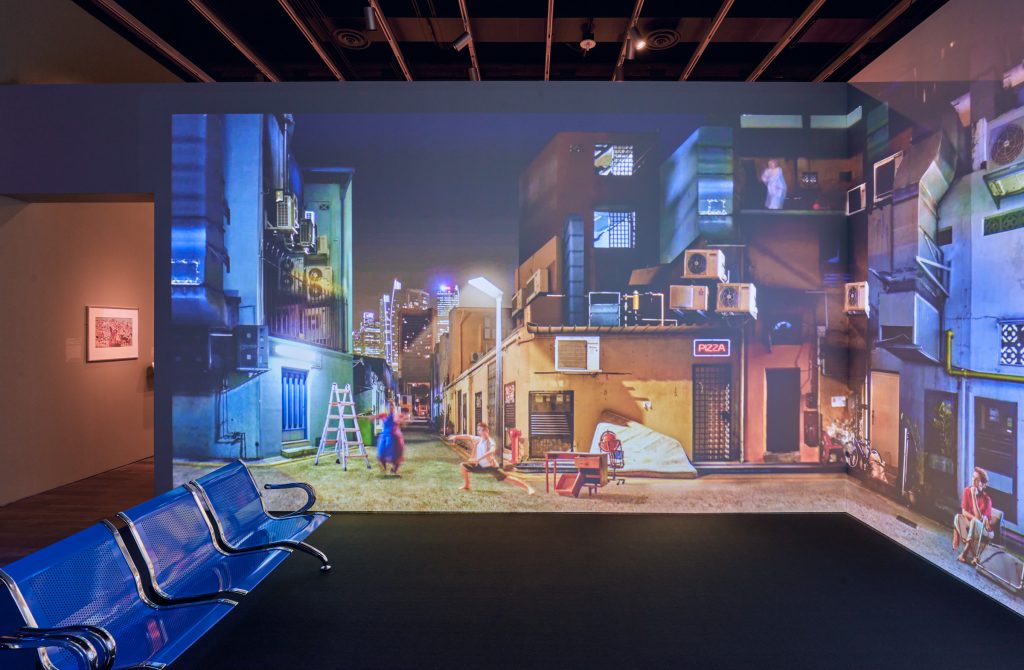
Installation view of “Beyond Bollywood: 2000 Years of Dance in Art” at the Asian Art Museum, San Francisco, with Sarah Choo Jing, Art of the Rehearsal (2016). Photo courtesy of the Asian Art Museum, San Francisco.
“The piece fills a whole room, projected on three walls. It’s the back streets of Singapore with people practicing their dance,” McGill said. “It’s very striking.”
“The exhibition makes the point that these traditions—the importance of dance, the significance of dance, the variety of powerful things that dance can do,” he added, “That continues right up to today.”
See more works from the show below.
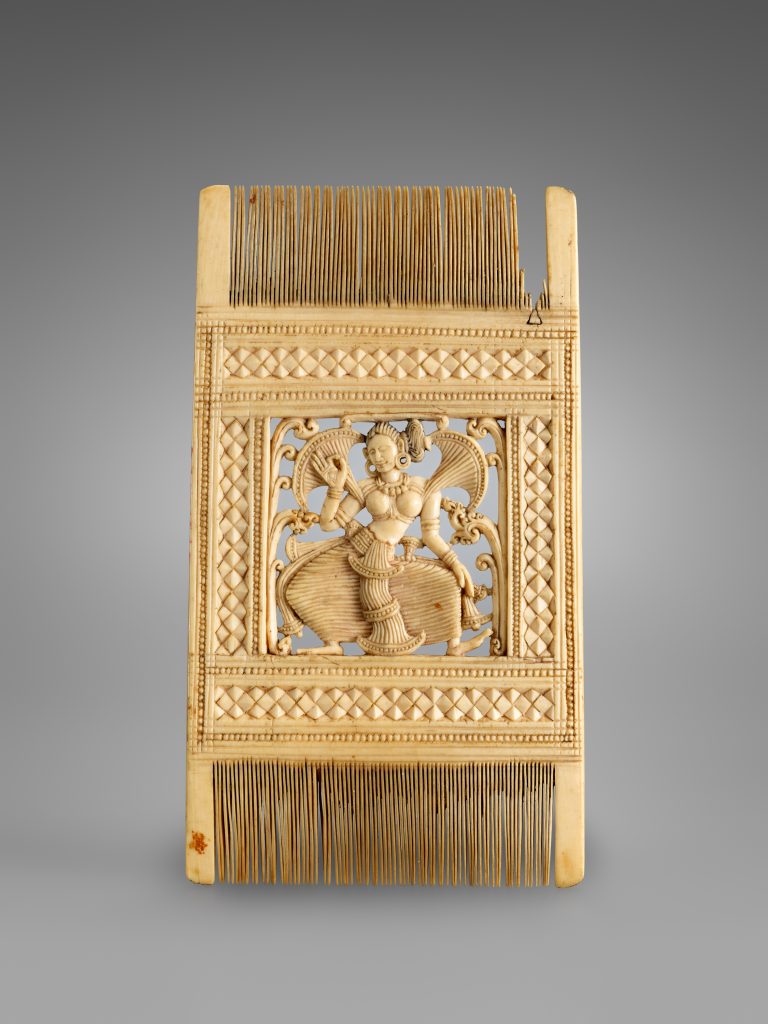
Comb with depiction of dancing woman (ca. 1600–1700). Sri Lanka; former kingdom of Kandy. Ivory with traces of pigment. Collection of the Asian Art Museum of San Francisco, the Avery Brundage Collection. Photo ©Asian Art Museum of San Francisco.
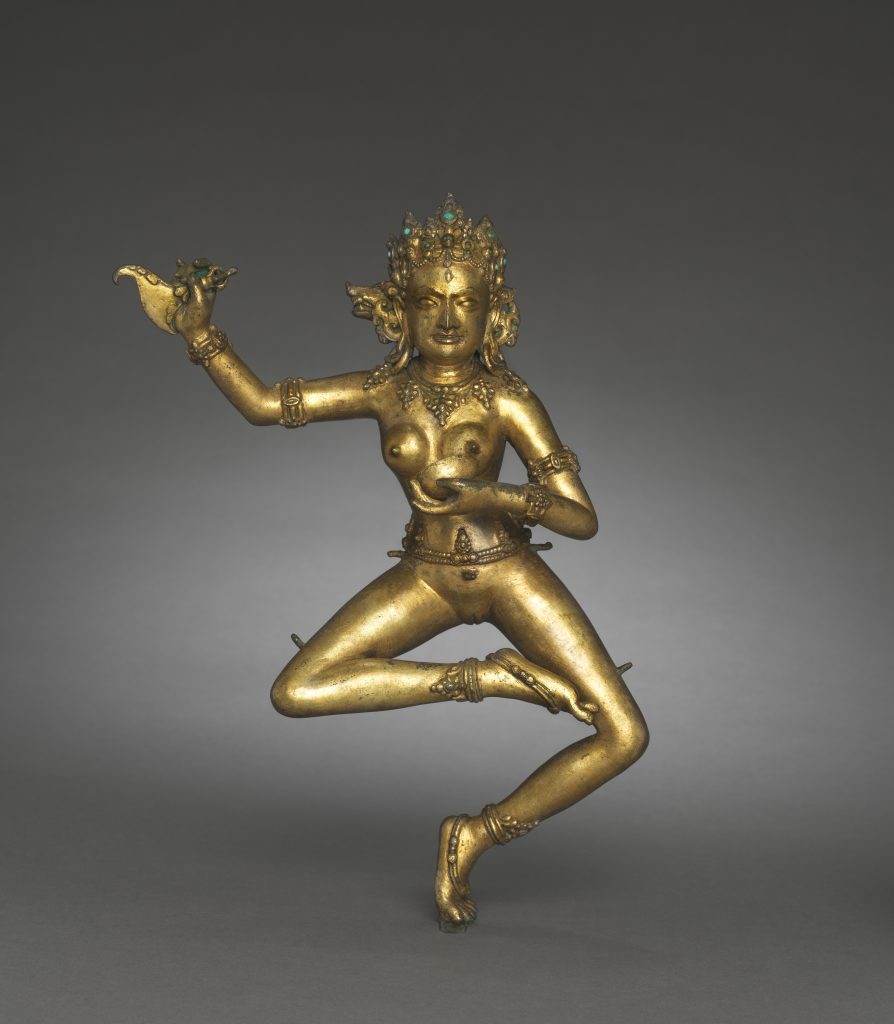
The Buddhist deity Vajravarahi (ca. 1300–1400). Tibet. Bronze with gilding and inlaid turquoise. Collection of the Cleveland Museum of Art, Leonard C. Hanna, Jr. Fund.
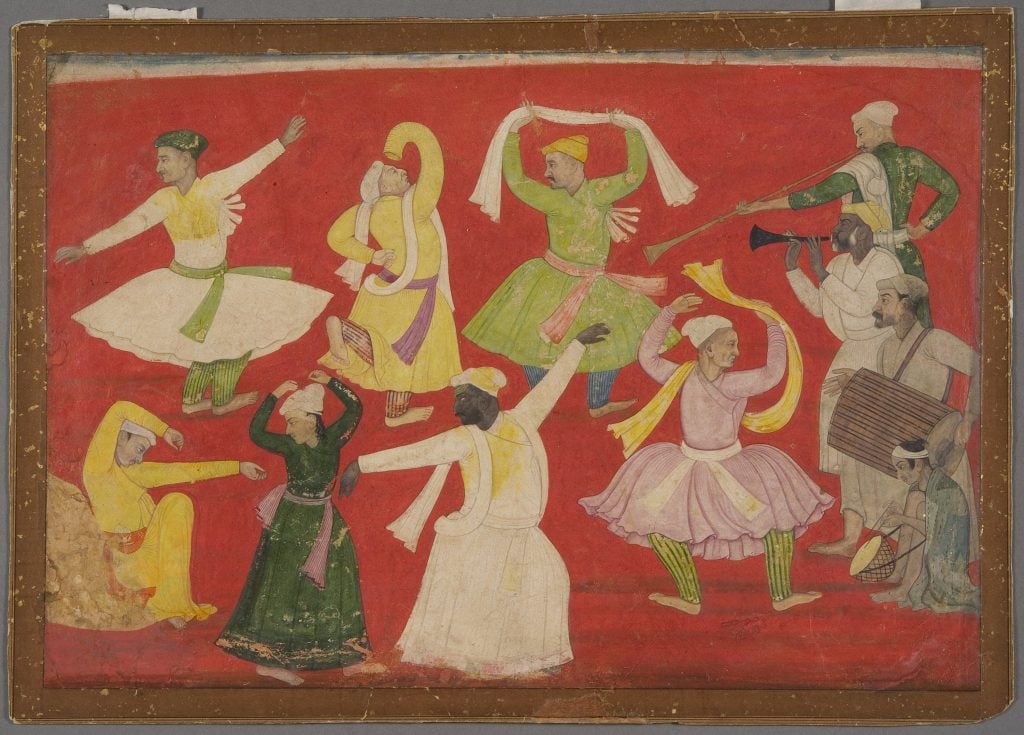
Attributed to Pandit Seu, Dancing villagers (ca. 1730). Indian. Opaque watercolors on paper. Collection of the Los Angeles County Museum of Art, from the Nasli and Alice Heeramaneck Collection, Museum Associates Purchase.
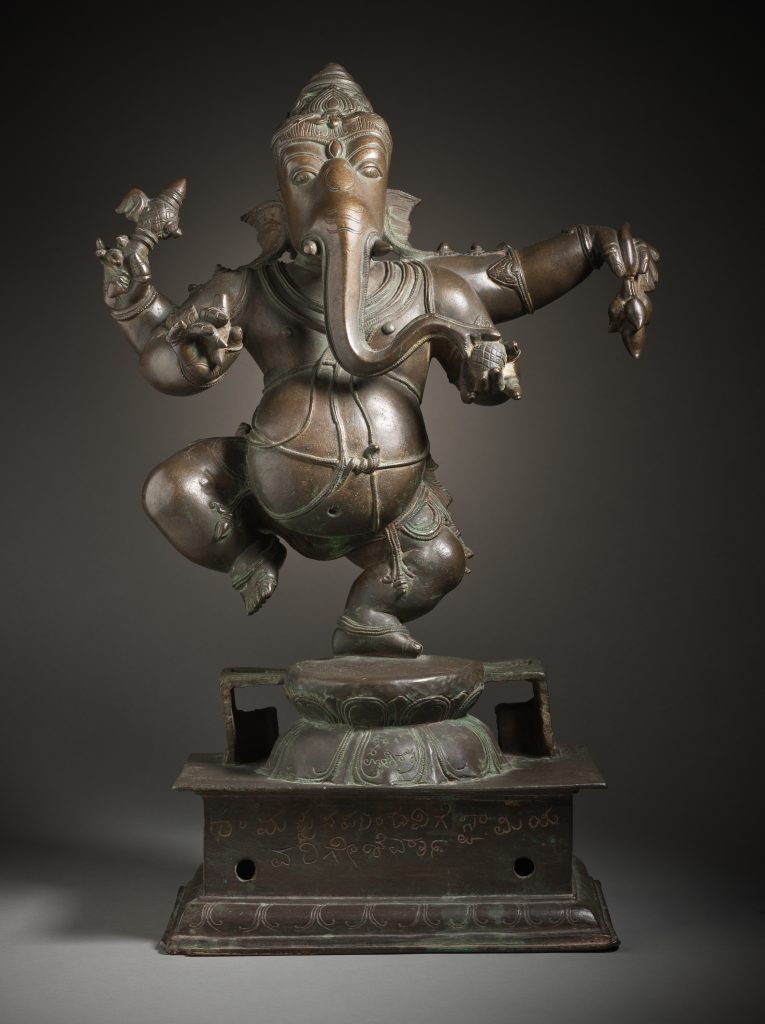
Dancing Ganesha (ca. 1500–1700), India, Karnataka state. Copper alloy. Collection of the Los Angeles County Museum of Art, purchased with funds provided by Harry and Yvonne Lenart.
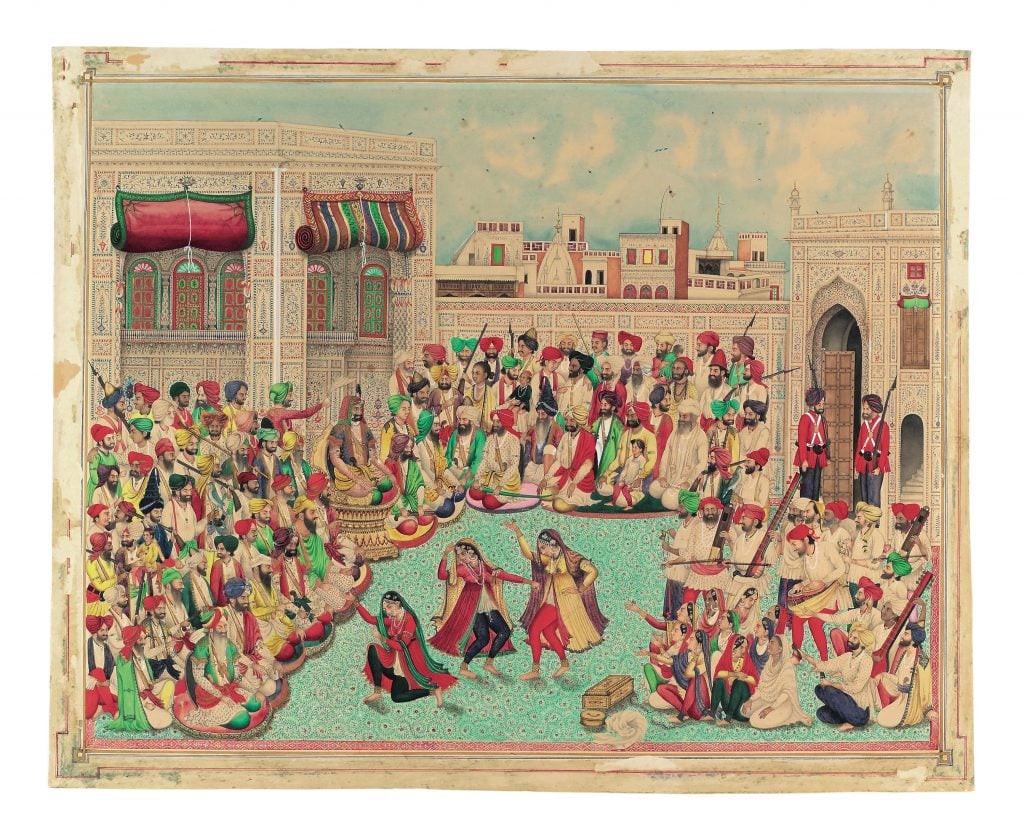
Maharaja Sher Singh and companions watching a dance performance (ca. 1850). Pakistan; Lahore. Opaque watercolors and gold on paper. Collection of the San Diego Museum of Art, Edwin Binney 3rd Collection.
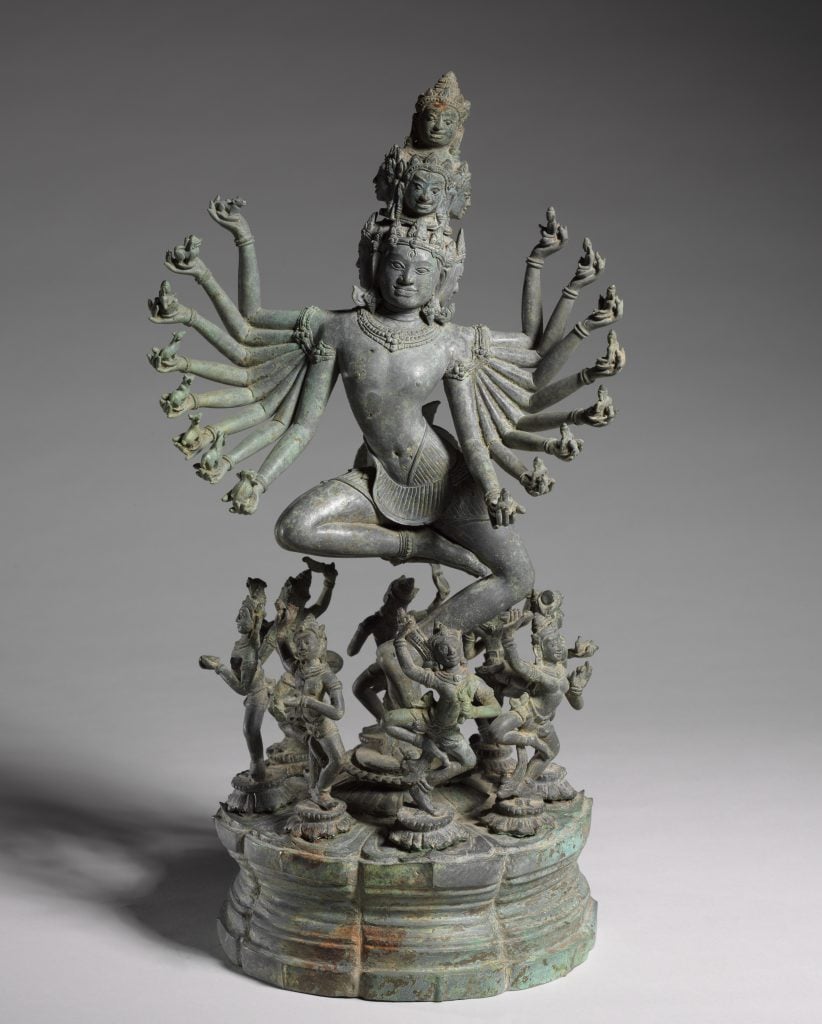
Dancing Hevajra surrounded by dancing yoginis (ca. 1050–1100). Northeastern Thailand; former kingdom of Angkor. Bronze. Collection of the Cleveland Museum of Art, gift of Maxeen and John Flower in honor of Stanislaw Czuma.
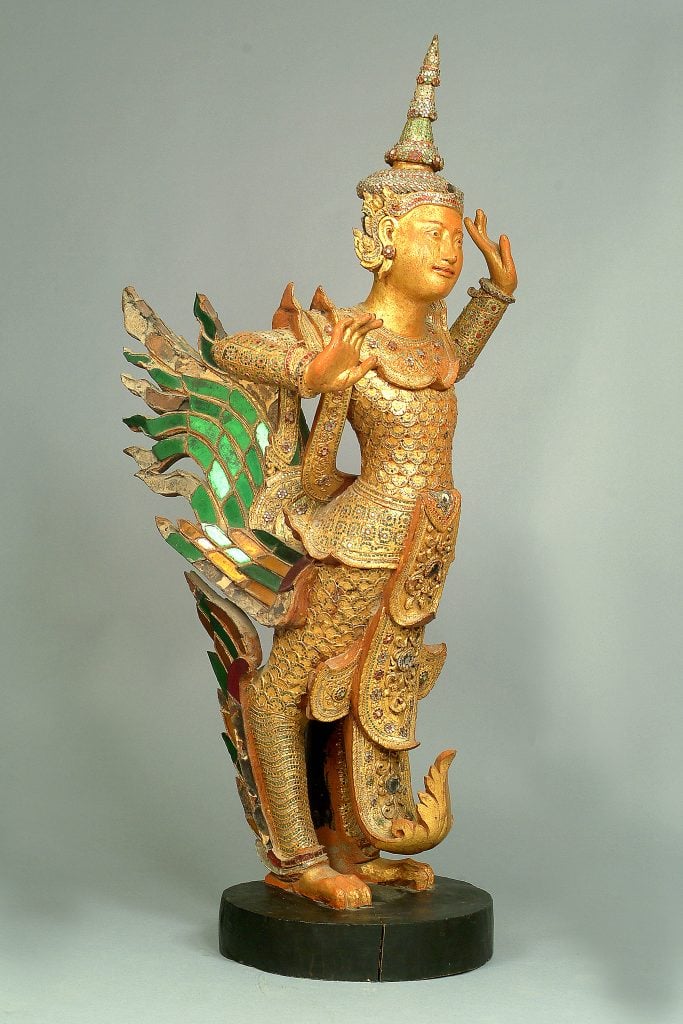
Mythical bird-man and bird-woman dancing (ca. 1857–1885), Myanmar (Burma). Wood with lacquer, gold leaf, and inlaid glass. Burma Art Collection at Northern Illinois University, gift of Konrad and Sarah Bekker.

Mythical bird-man and bird-woman dancing (ca. 1857–1885), Myanmar (Burma). Wood with lacquer, gold leaf, and inlaid glass. Burma Art Collection at Northern Illinois University, gift of Konrad and Sarah Bekker.
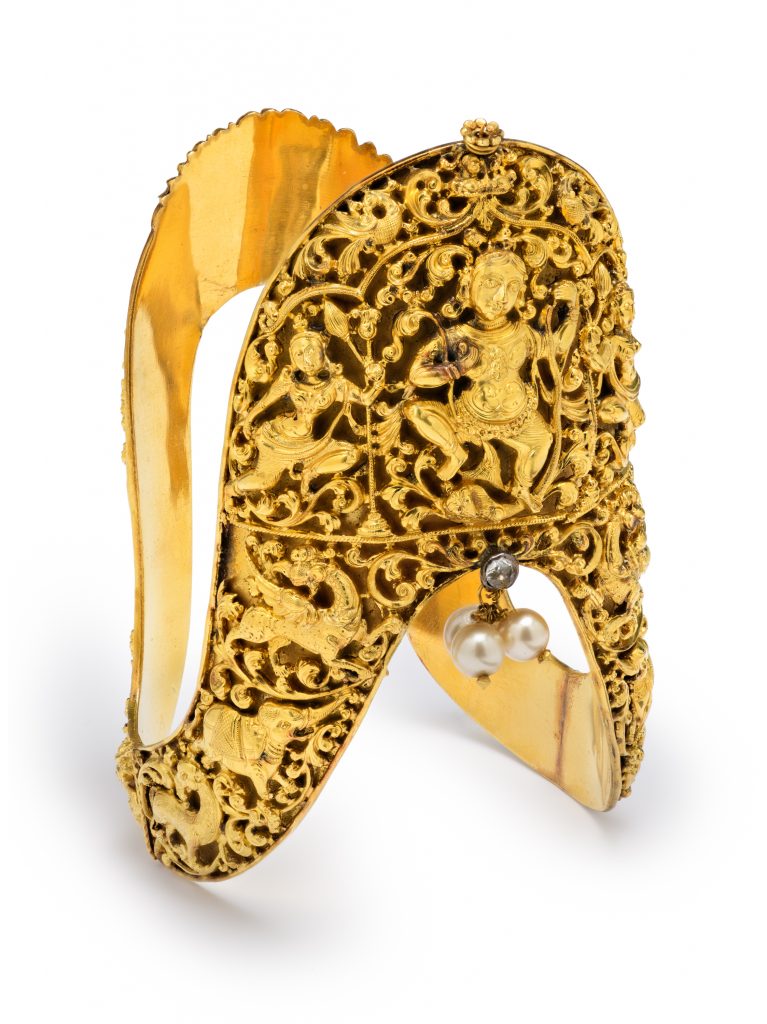
Armlet with Krishna overcoming the serpent Kaliya (ca. 1850–1900). India; Chennai, Tamil Nadu state. Gold, opalescent glass, and topaz. Collection of the Los Angeles County Museum of Art, purchased with funds provided by the Nasli and Alice Heeramaneck Collection, Museum Associates Purchase.
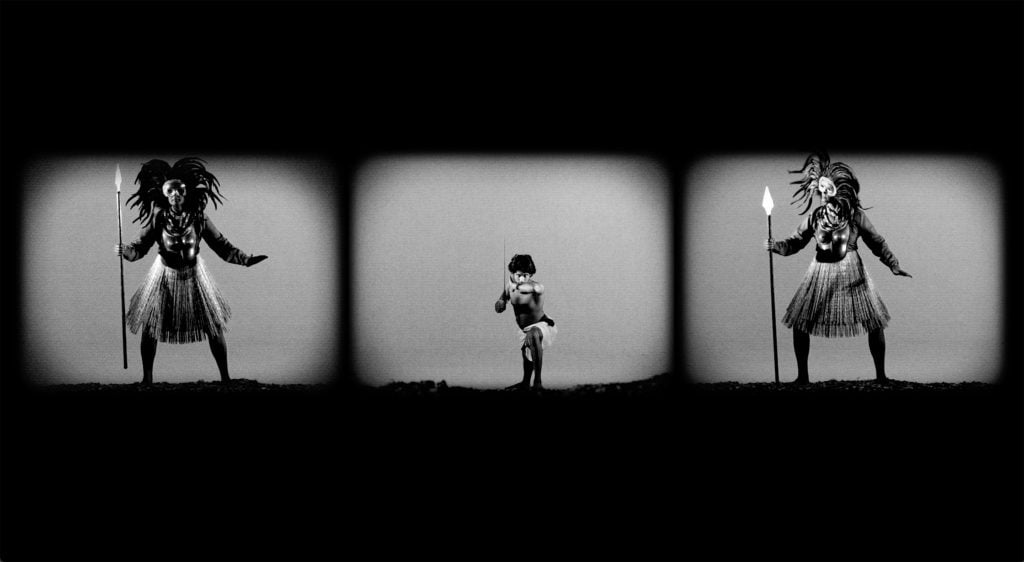
Pushpamala N., Still image from Indrajaala/Seduction (2012) (Indian, b. 1956). Courtesy of the artist.

The Lords of the Cremation Ground dancing (ca. 1400–1500), Tibet. Gift of Shelley and Donald Rubin Foundation.
“Beyond Bollywood: 2000 Years of Dance in Art” is on view at the Asian Art Museum, Chong-Moon Lee Center for Asian Art and Culture, 200 Larkin Street, San Francisco, California, March 31–July 10, 2023.